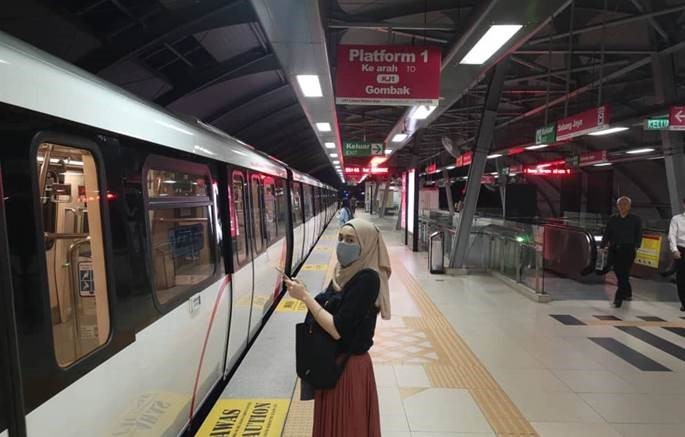
KUALA LUMPUR (Oct 3): Malaysia seems to have returned to ground zero in stemming the spread of the COVID-19 infections with a back-to-back announcement on the significant spikes in the coronavirus pandemic cases, just as the country’s economy is seeing green shoots.
Malaysia recorded the highest number of new cases at 287 on Oct 2 and 260 cases on Oct 1, which is now the third-highest number of cases recorded since the virus was detected in Malaysia.
The new figures reflect that the country has entered into the third wave of battling the pandemic, which has posed a major challenge to the economy.
It is now crucial to find new ways to flatten the curve again.
The significant increase in infections on Oct 1 and 2 came after a surge in travel to and from Sabah for the state elections, with the national tally now standing at more than 11,400 cases and with a total of 136 deaths so far.
On June 4, the country previously reported 277 new infections with only four of these cases being locally transmitted, while a majority of the remaining cases were detected among foreigners from the Bukit Jalil Immigration Detention Depot.
It is about time that we take a hard look on how to contain the spread of the virus yet again.
The authorities have given a steady assurance that it will monitor and curb the spread of the COVID-19 virus, as well as, a strong compliance of the standard operating procedures (SOPs) from everyone is critical.
Can we afford another partial lockdown to contain the pandemic?
The answer would be NO.
Malaysia's economy has already been affected severely by the pandemic, leading to a double-digit contraction of 17.1 per cent in the second quarter of 2020.
This is driven primarily by a decline in domestic demand due to the imposition of the Movement Control Order on March 18 to stem the spread of COVID-19, as well as, weak external conditions.
According to the World Bank, Malaysia entered the outbreak with limited fiscal space due to a persistent decline in government revenue since 2012 and increased expenditure rigidity.
This constrained the magnitude and quality of the fiscal response to the outbreak. Instead, the government relied more on monetary and financial sector forbearance.
Households will require continued financial support during the recovery. An enhanced social protection system is needed to provide more robust and sustainable protection beyond one-off crisis relief measures.
Private consumption also declined sharply due to lower household income, movement restrictions and subdued consumer and business sentiment.
Heightened uncertainty also affected business sentiment and resulted in a large decline in private investment.
However, as the economy reopened there were signs of recovery as several indices, namely the wholesale and retail sector, industrial production, exports and credit card spending are experiencing a notable improvement.
In order to stimulate the economy, the government has so far announced stimulus packages worth RM305 billion, the most recent one being the additional assistance under the RM10 billion PRIHATIN Supplementary Initiative Package (KITA PRIHATIN) in line with its efforts to boost economic recovery.
The KITA PRIHATIN package is the extension of the previous economic stimulus packages, namely PRIHATIN, PRIHATIN SME PLUS and PENJANA (the National Economic Recovery Plan) worth a total of RM295 billion, or about 20 per cent of the nation’s gross domestic product, with an additional fiscal injection totalling RM45 billion by the government.
The Malaysian labour market also improved in July.
The Department of Statistics Malaysia recently revealed that the unemployment rate fell to 4.7 per cent during the month from 4.9 per cent in June and 5.3 per cent in May. The number of unemployed persons in July stood at 745,100, a decline of 28,200 people compared with the previous month.
But another lockdown would aggravate things further as Malaysians, especially businesses, and those who were made redundant and the lower-income bracket would find it harder to survive after the first round of partial lockdown early this year.
Prospects for recovery
In its latest Economic Update for East Asia and Pacific for October 2020 report, the World Bank said countries still facing a trade-off between containment and recovery can alleviate the situation by developing the capacity for smart containment.
The period of stringent containment or dormancy would be used to create the capacity to limit the spread of disease without recourse to excessively disruptive measures, as seems to have been accomplished in countries like China and Vietnam.
Similar strategic measures have been undertaken by the government here with the first Targeted Enhanced Movement Control Order (TEMCO) in Kedah and subsequently in Sabah, which now has the highest number of active cases.
"The moment we let down our guard, the virus will continue to spread. Sabah is one good example where we let down our guard, and this is what happened.
"Everyone must learn this lesson so that we do not repeat this again,” Health director-general Tan Sri Noor Hisham Abdullah said yesterday.
Not letting our guard down and accurate communication remain the keys to breaking the chain, yet again and ensuring that the economy remains on the growth path.
Source: https://www.theedgemarkets.com/article/safeguard-economy-breaking-covid19-infection-chain-again

